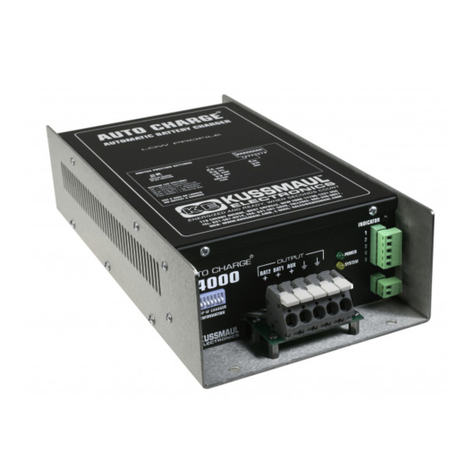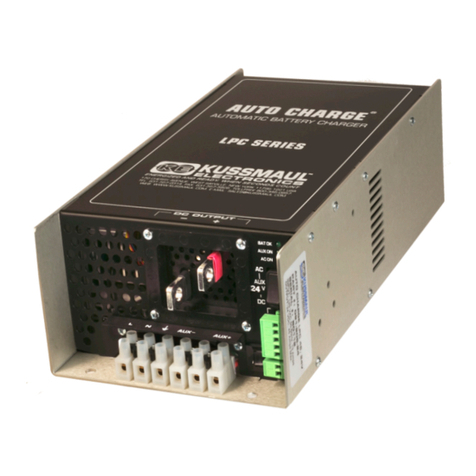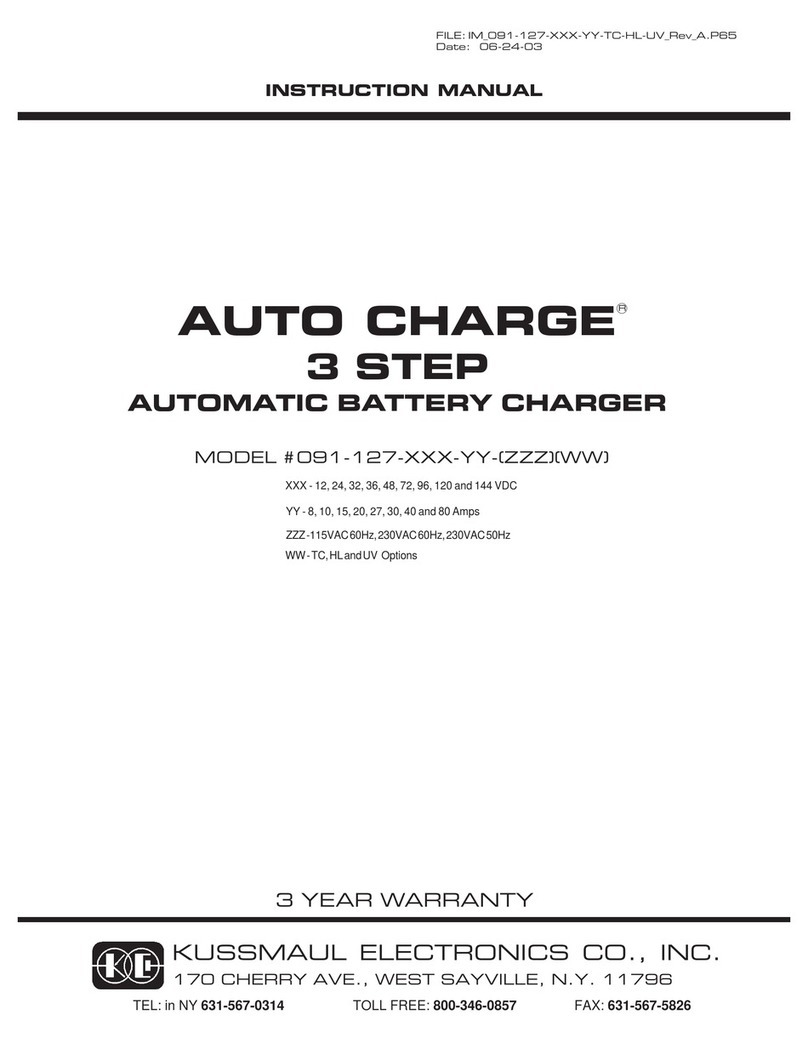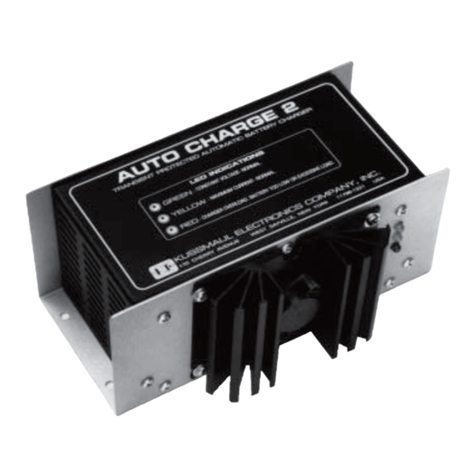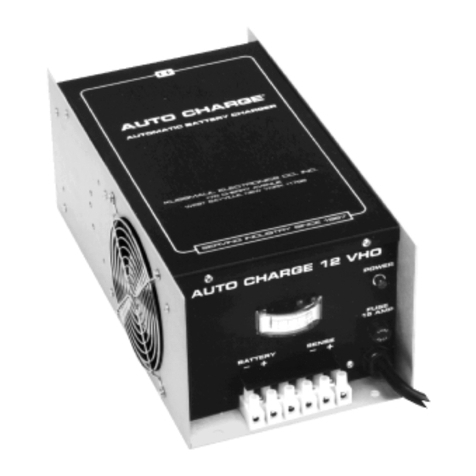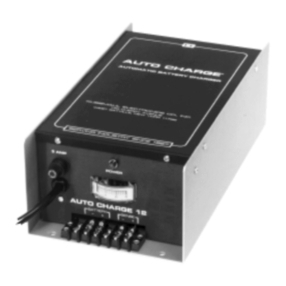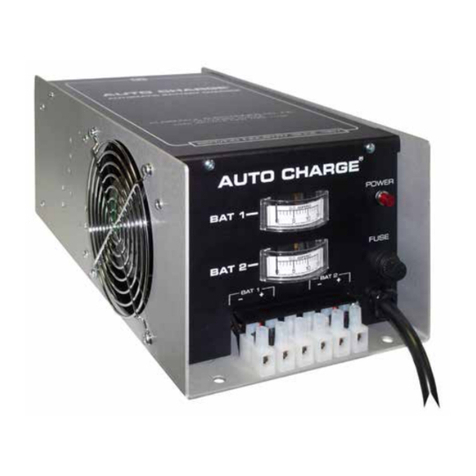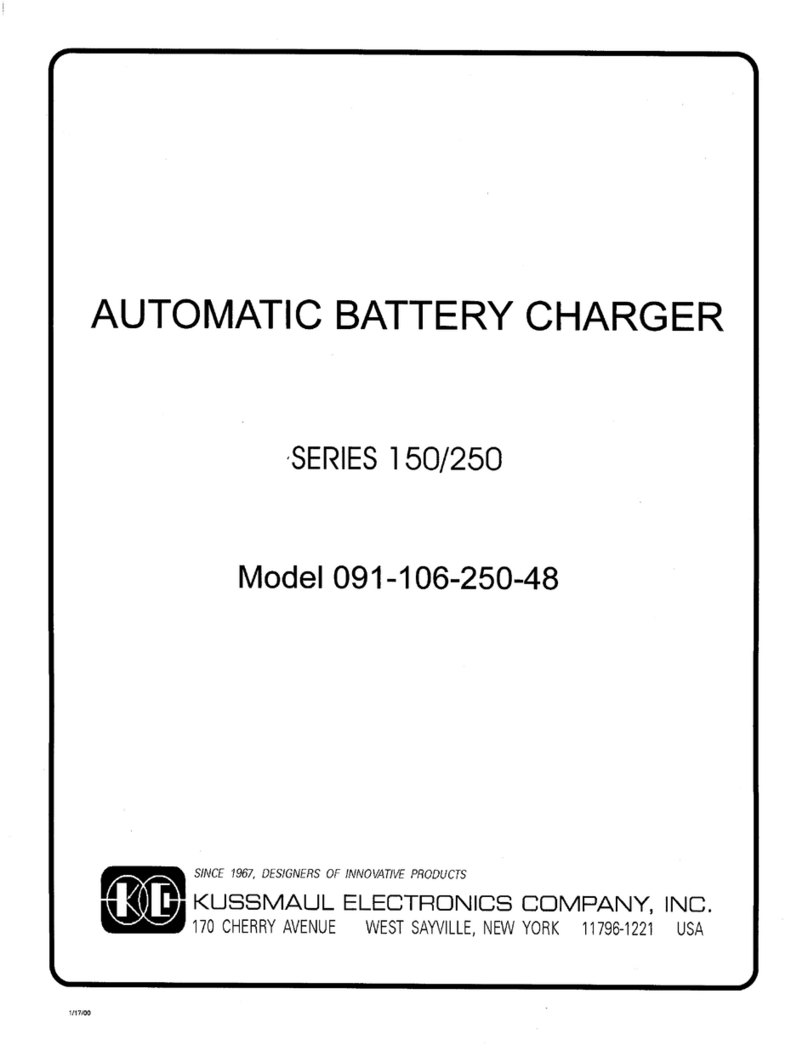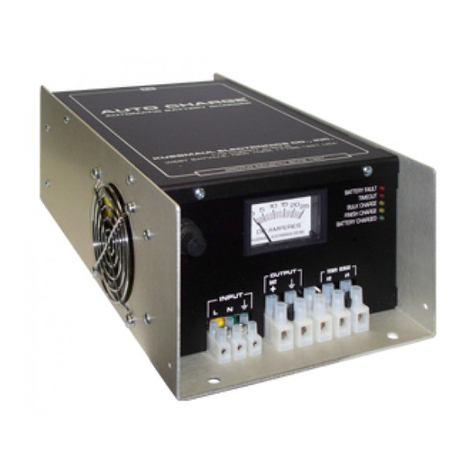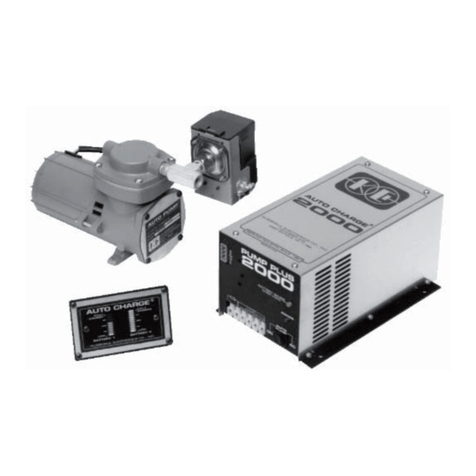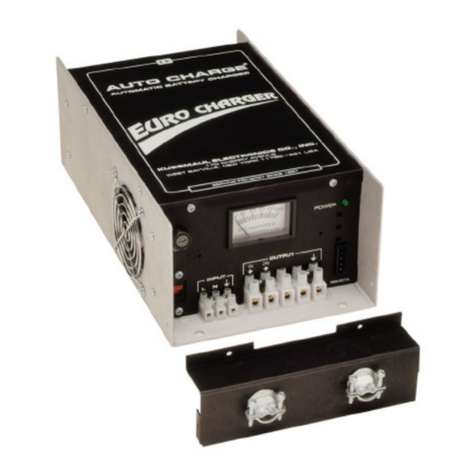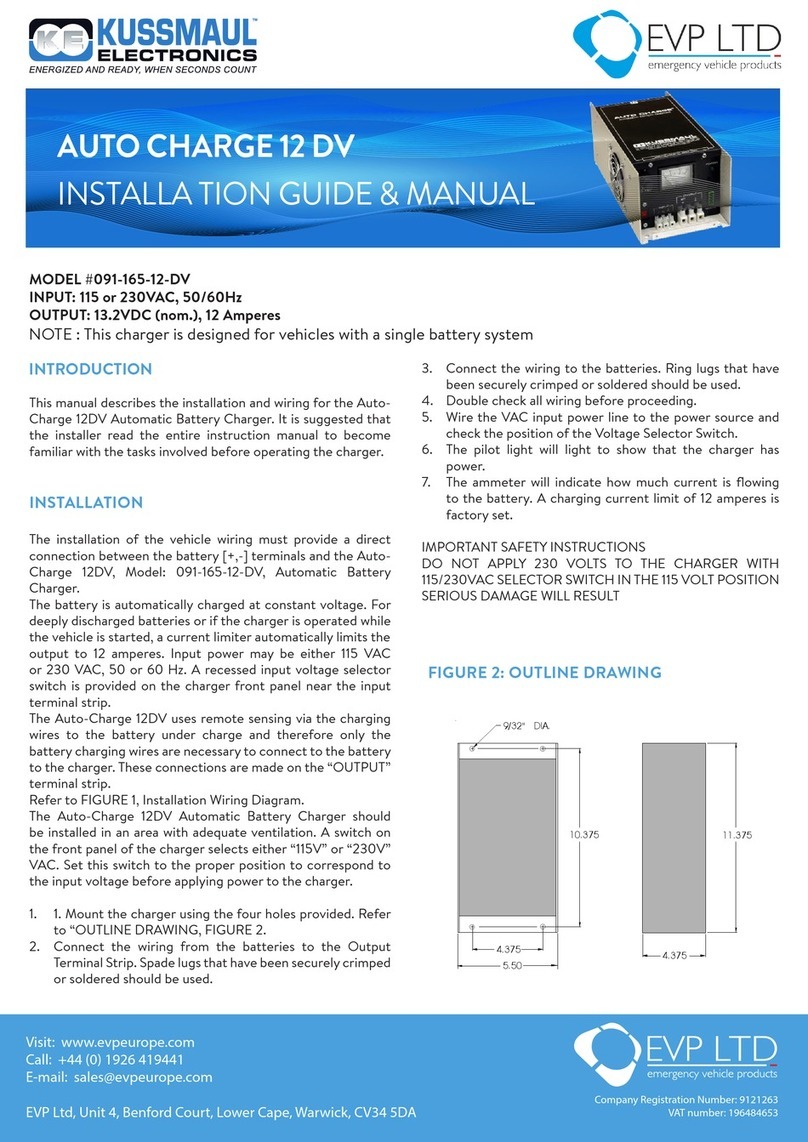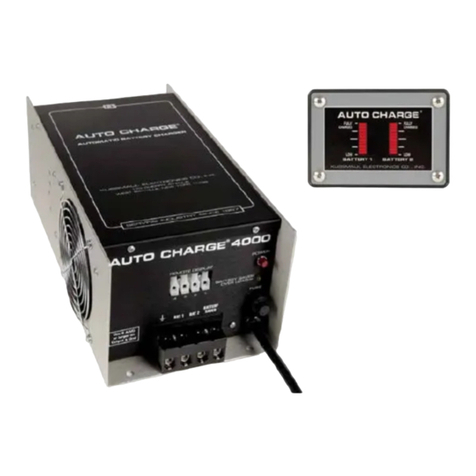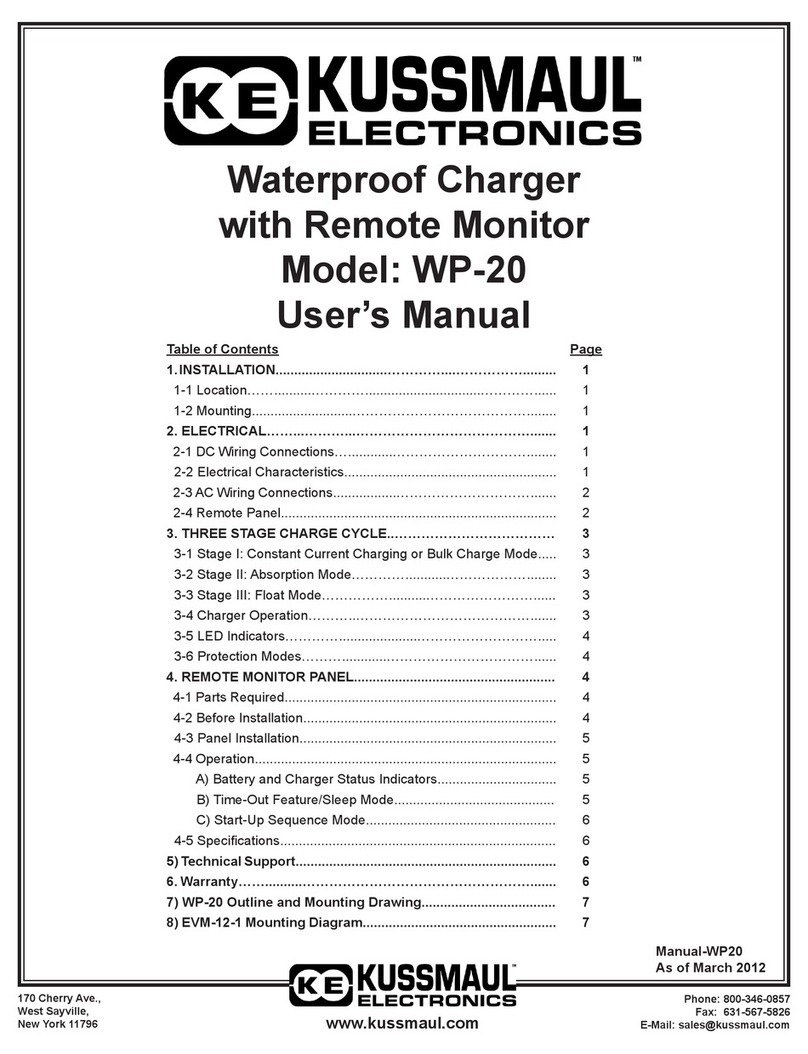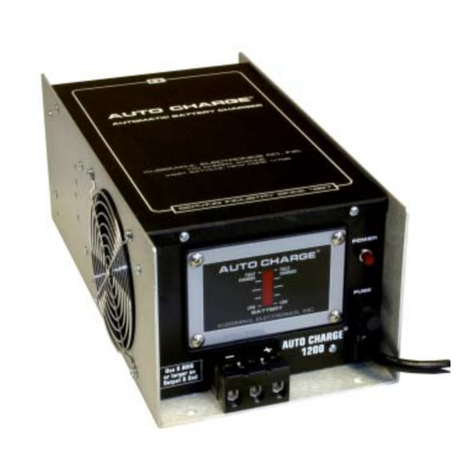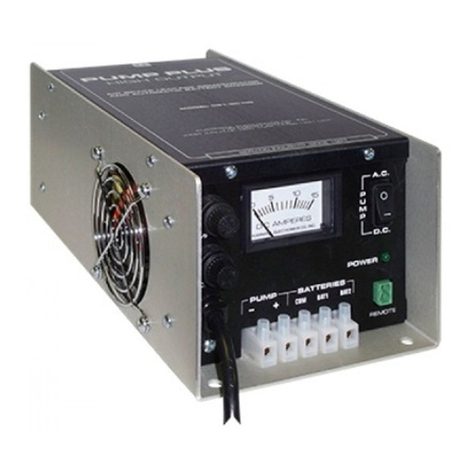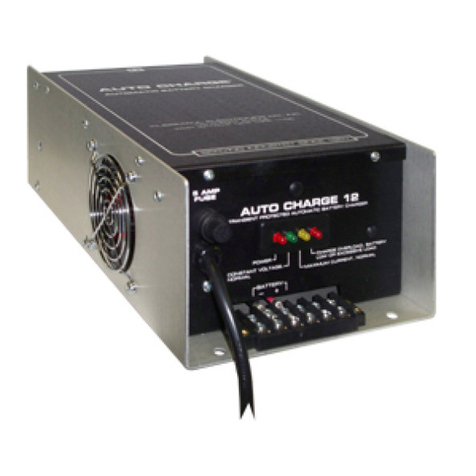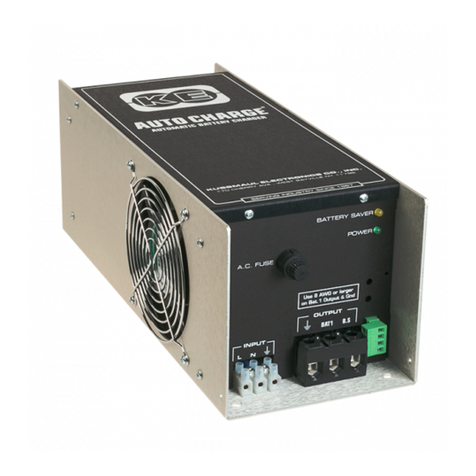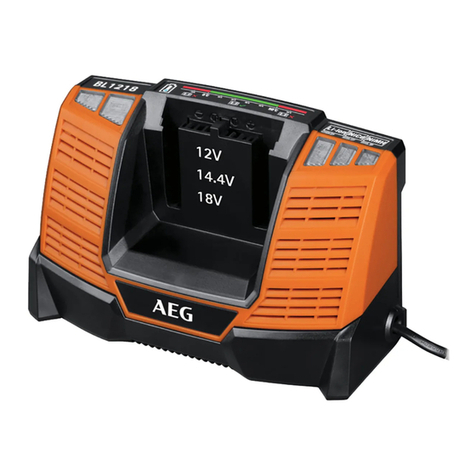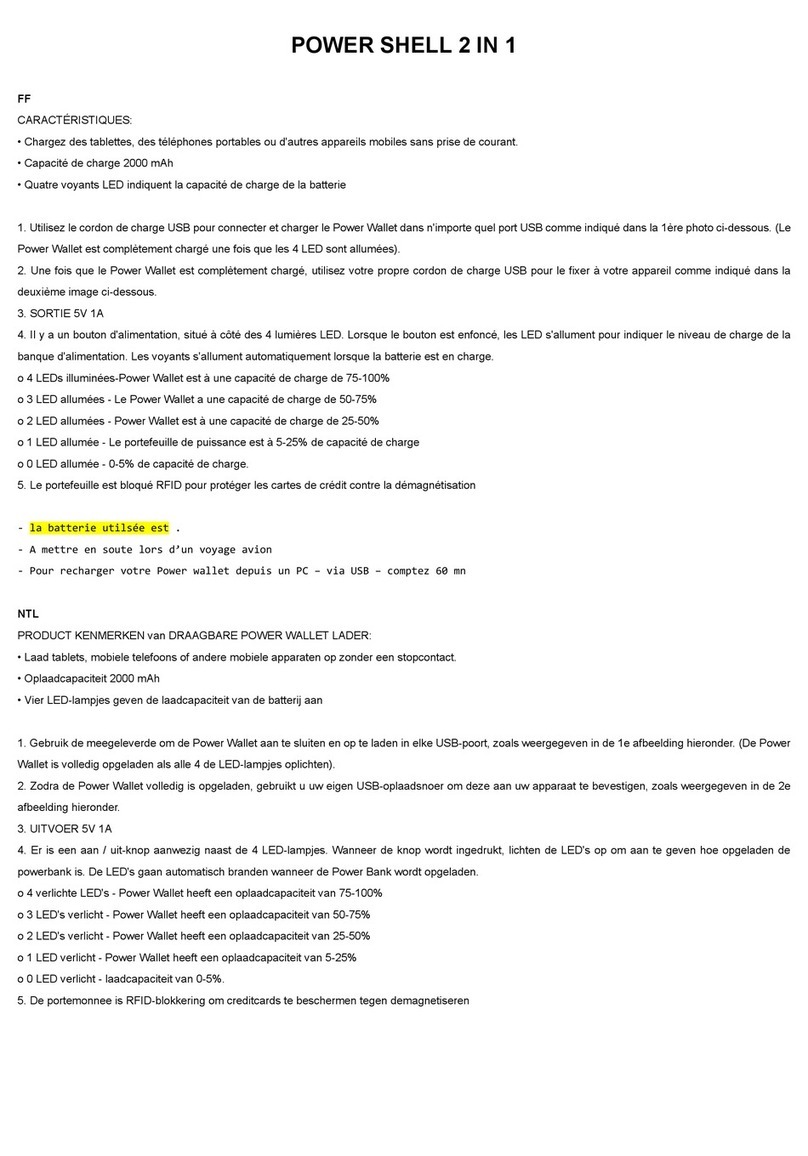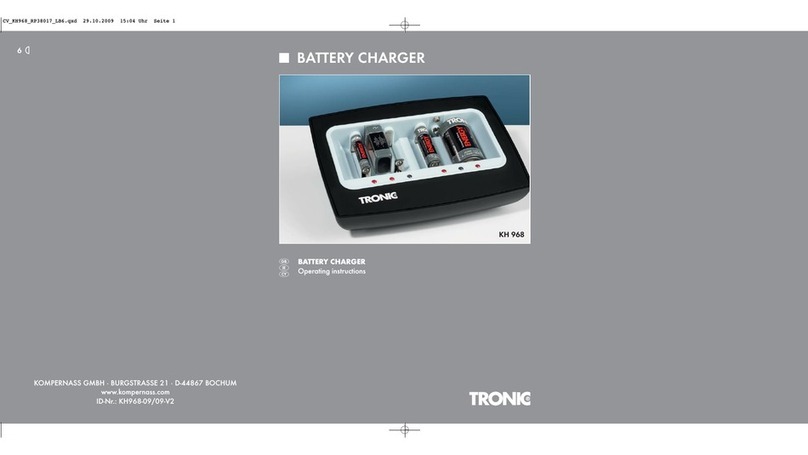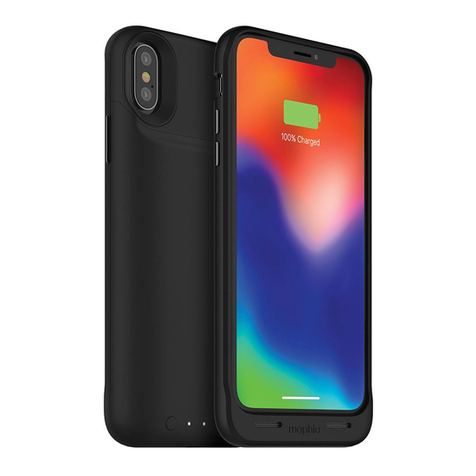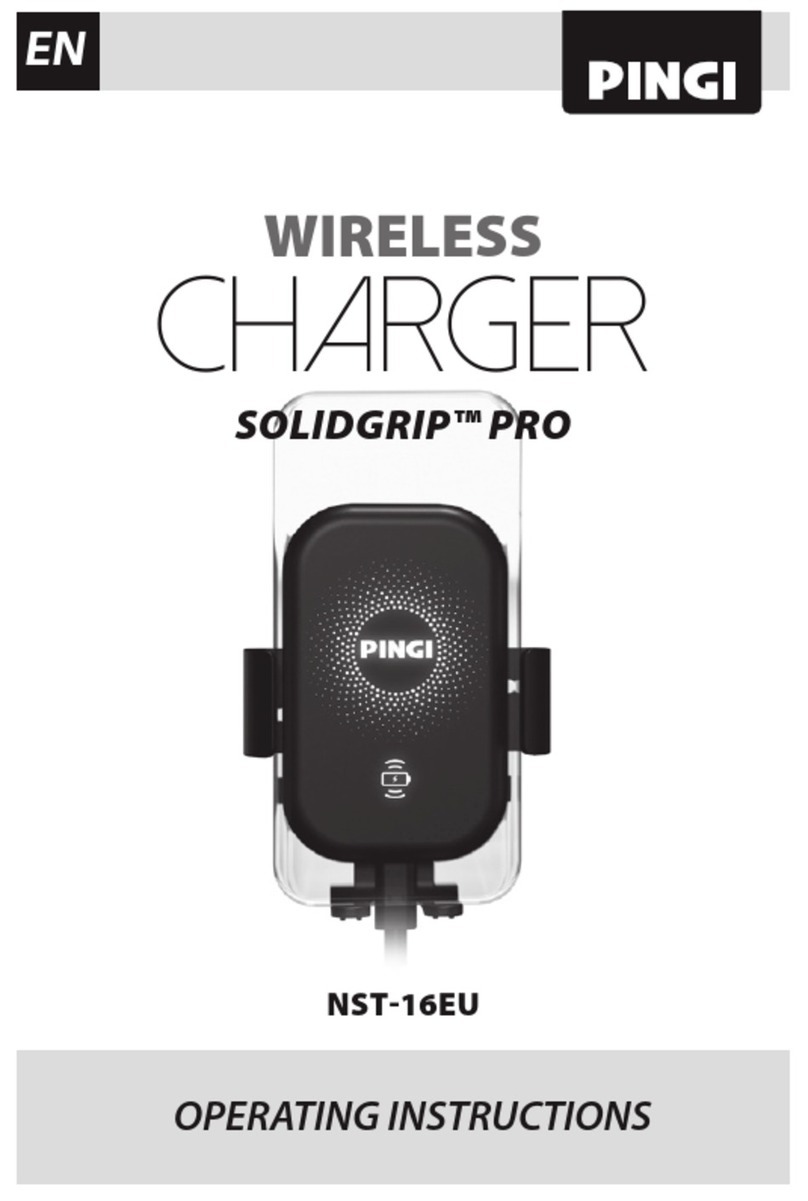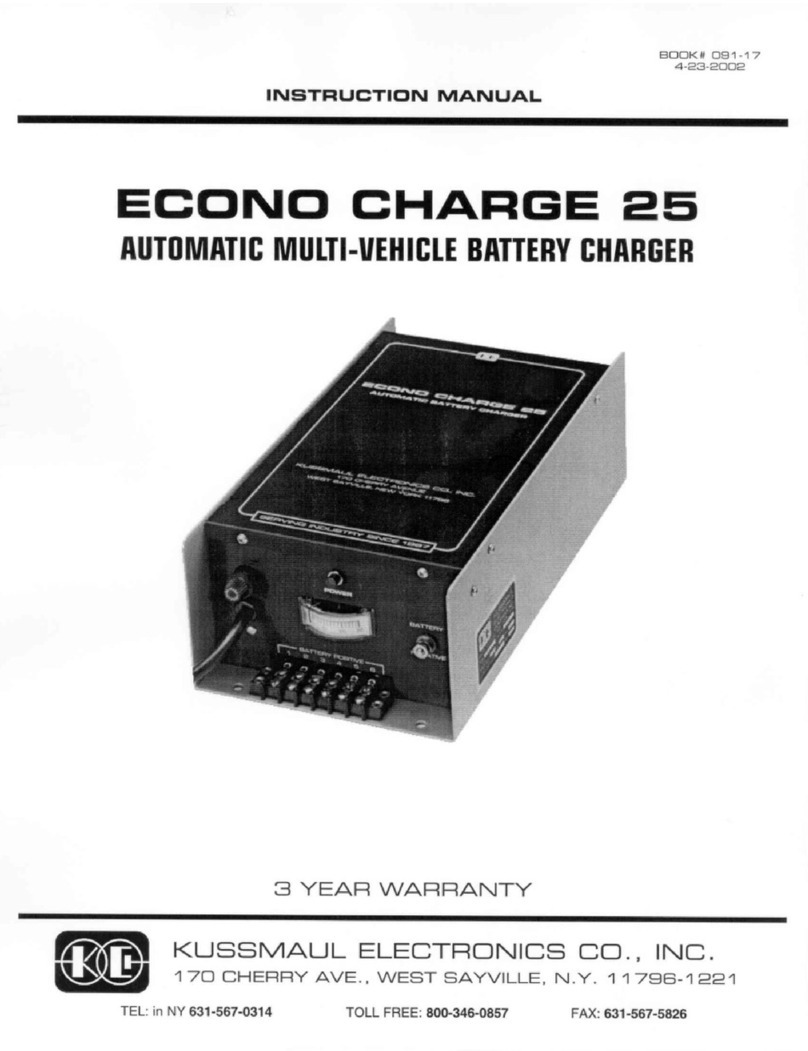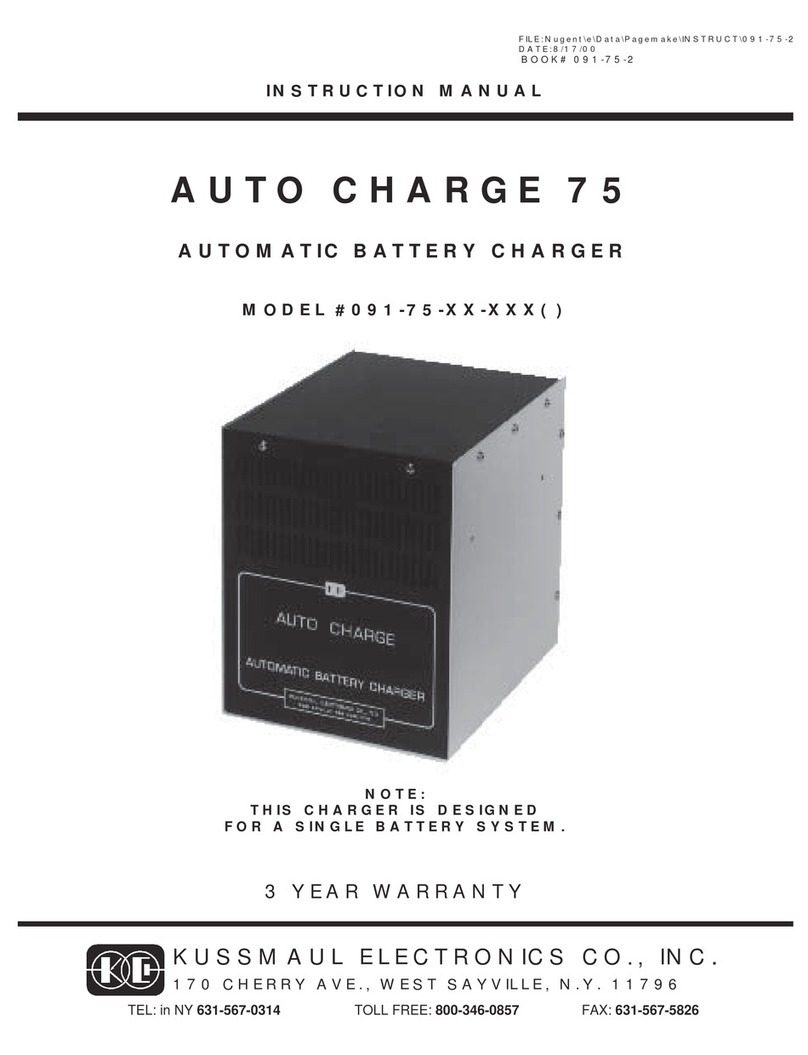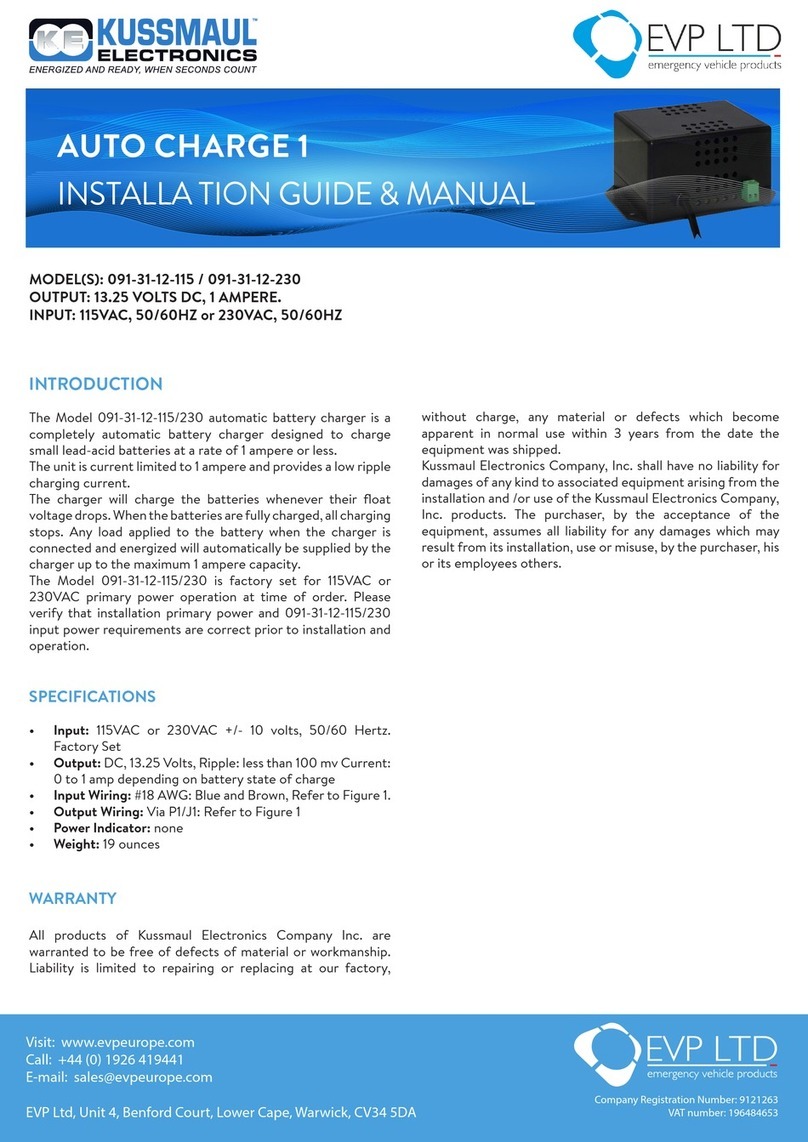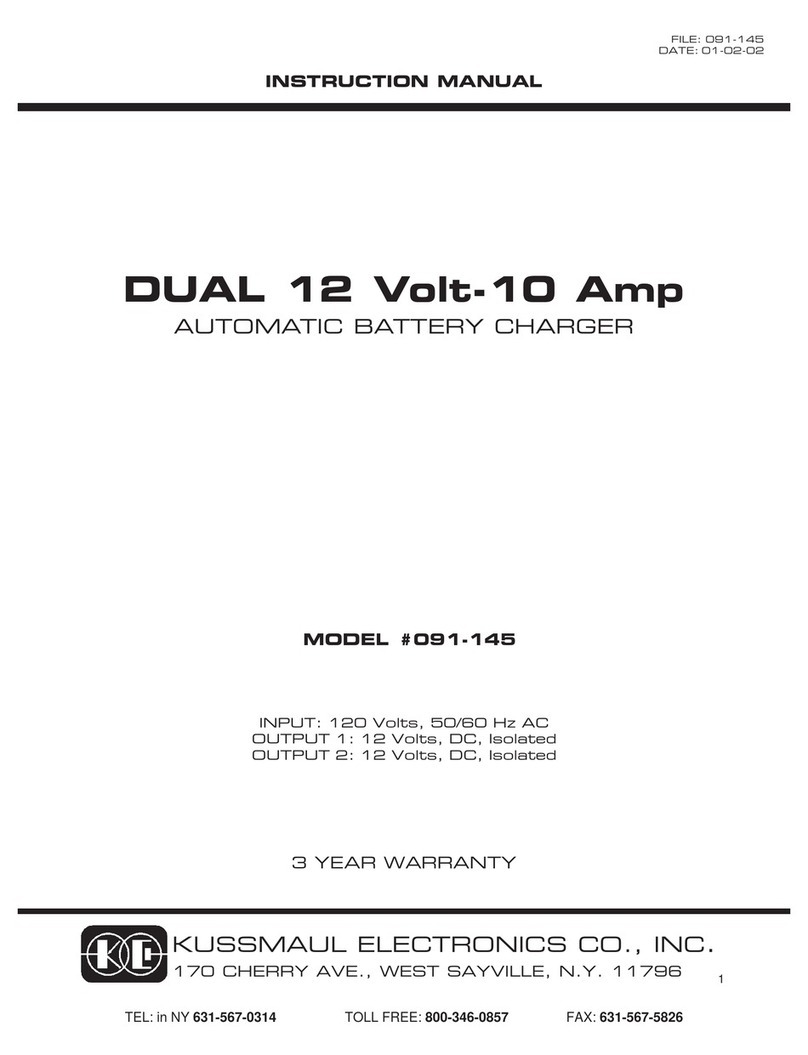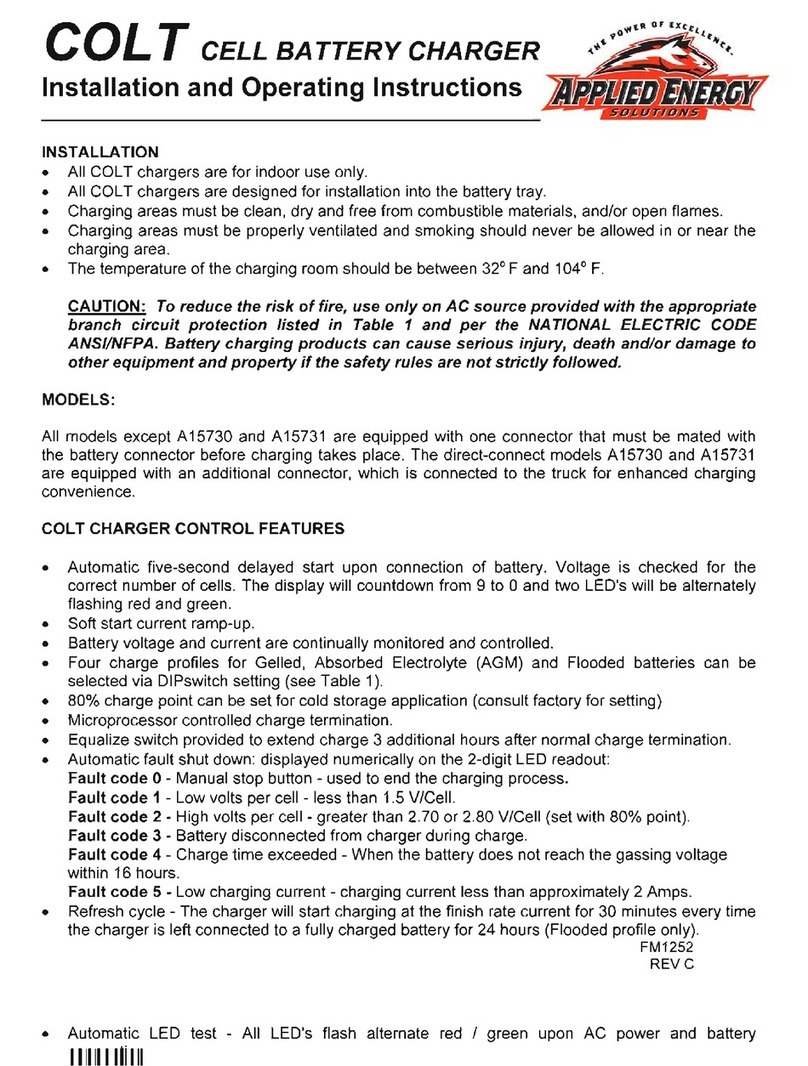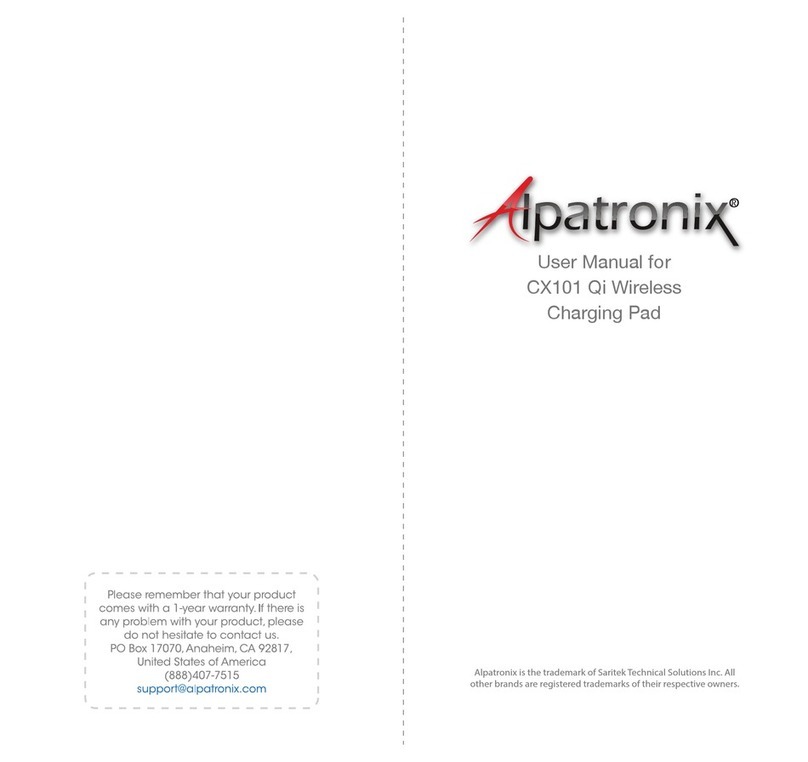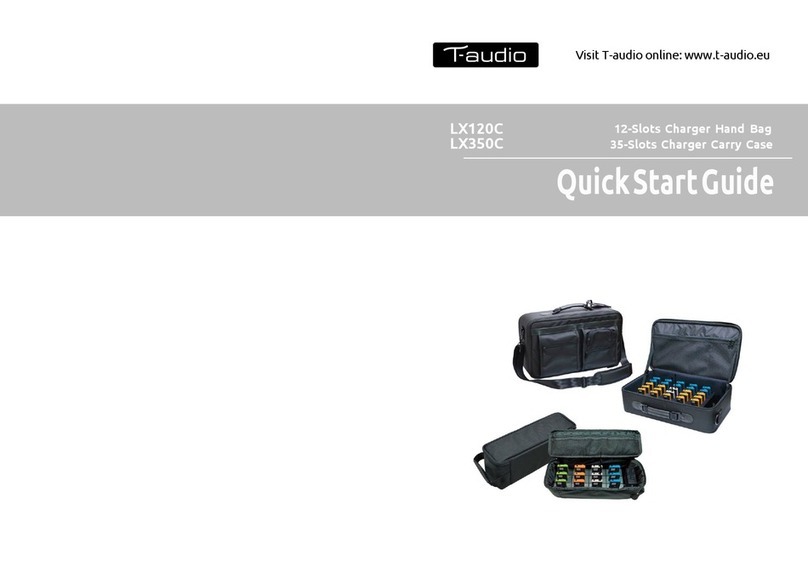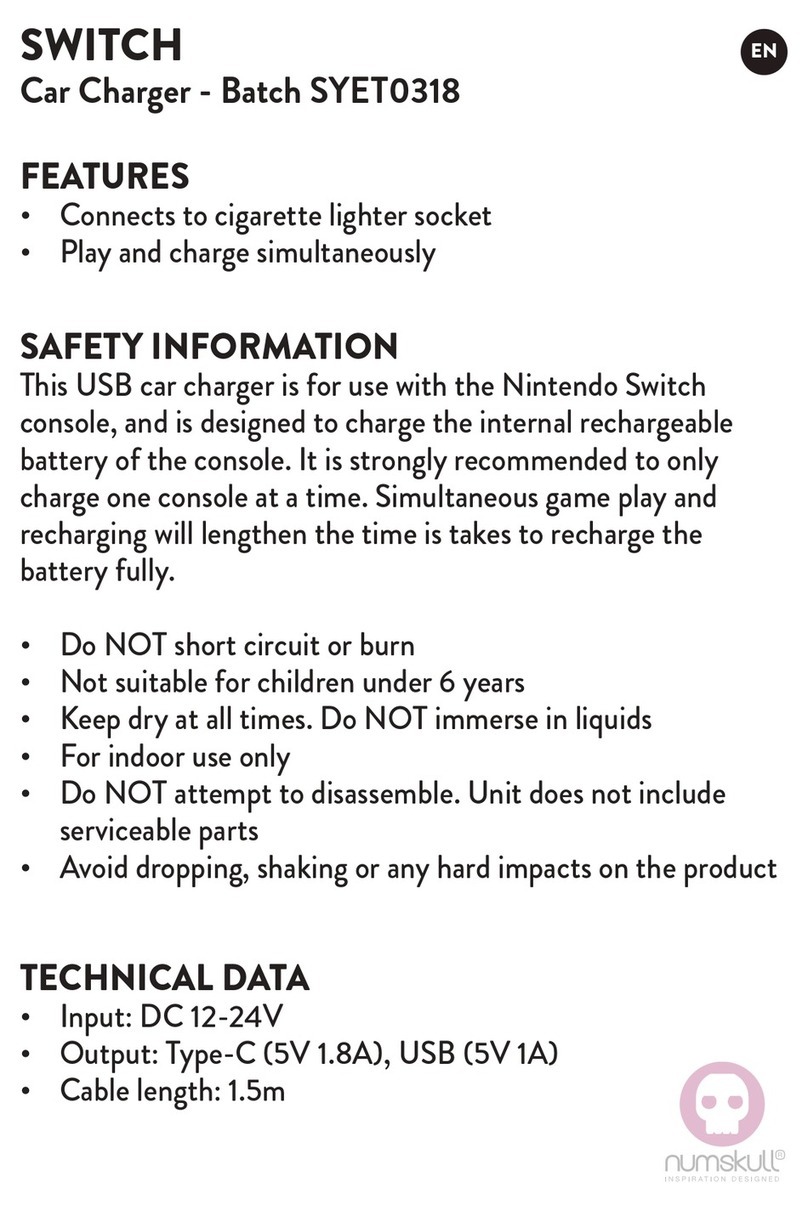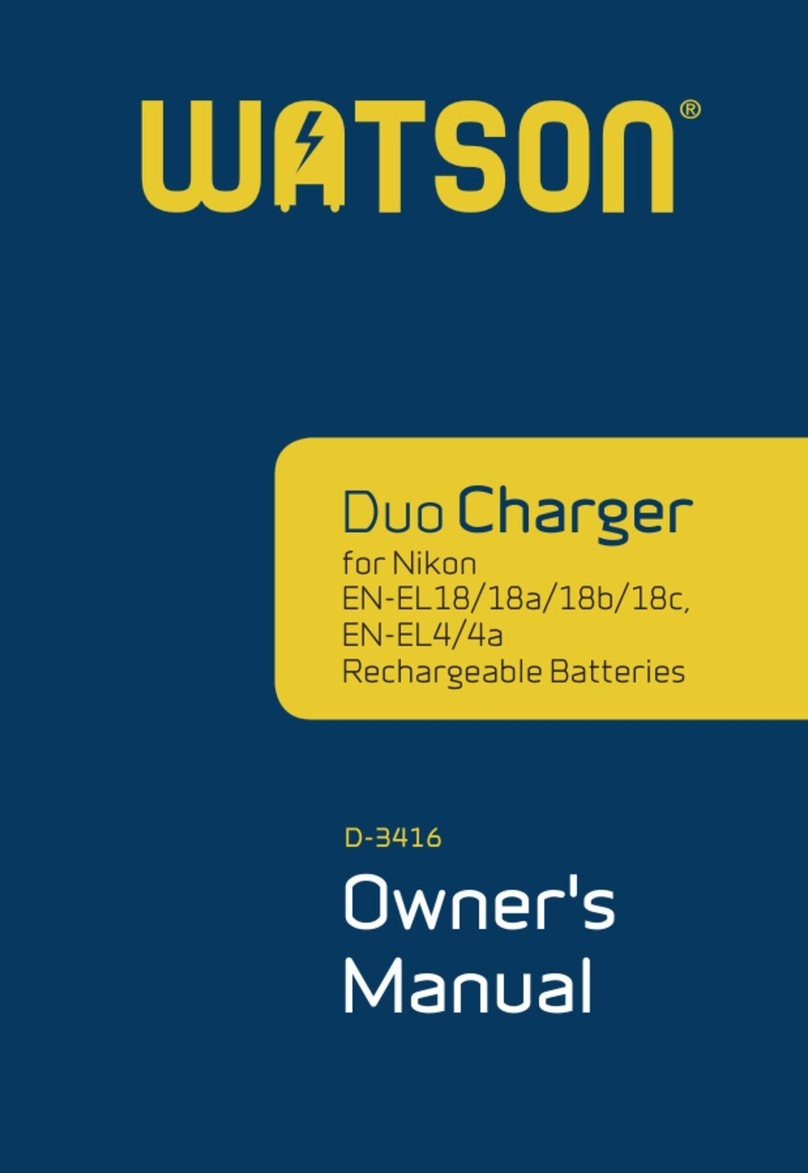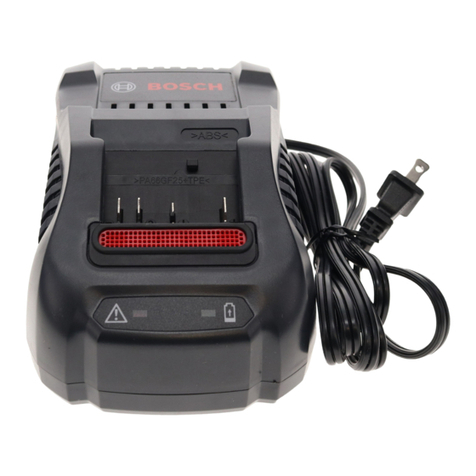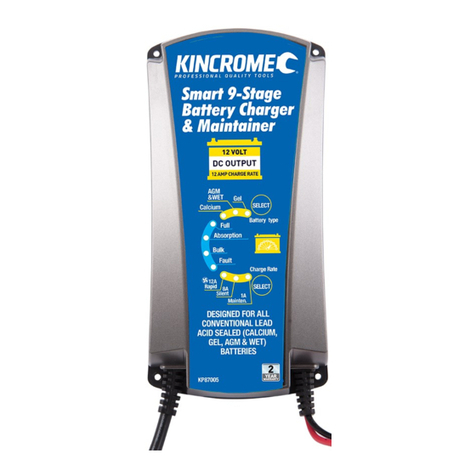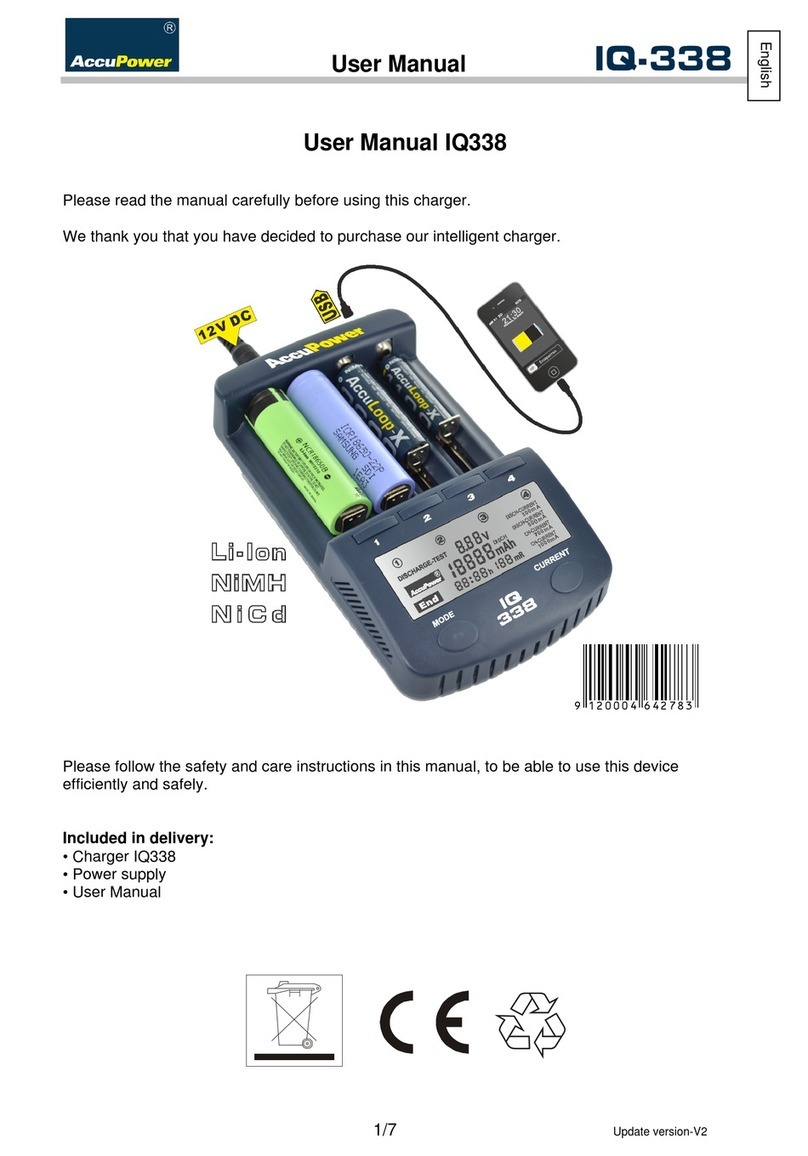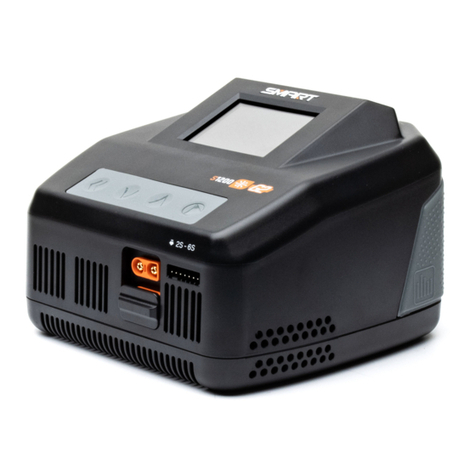
TM
AUTO CHARGE 12, 091-165-12
INSTALLA TION GUIDE & MANUAL
Visit: www.evpeurope.com
Call: +44 (0) 1926 419441
EVP Ltd, Unit 4, Benford Court, Lower Cape, Warwick, CV34 5DA
Company Registration Number: 9121263
VAT number: 196484653
h) Use charger for charging a LEAD-ACID battery only. It is not
intended to supply power to a low voltage electrical system
other than in a starter-motor application.
Do not use battery charger for charging dry-cell batteries that
are commonly used with home appliances. These batteries may
burst and cause injury to persons and damage to property.
i) NEVER charge a frozen battery.
12. PREPARING TO CHARGE
a) If necessary to remove battery from vehicle to charge,
always remove grounded terminal from battery first. Make
sure all accessories in the vehicle are o, so as not to cause
an arc.
b) Be sure area around battery is well ventilated while battery
is being charged. Gas can be forcefully blown away by using a
piece of cardboard or other nonmetallic material as a fan.
c) Clean battery terminals. Be careful to keep corrosion from
coming in contact with eyes.
d) Add distilled water in each cell until battery acid reaches
level specified by battery manufacturer. This helps purge
excessive gas from cell. Do not overfill.
For a battery without cell caps, carefully follow manufacturer’s
recharging instructions.
e) Study all battery manufacturer’s specific precautions such
as removing or not removing cell caps while charging and
recommended rates of charge.
f) Determine voltage of battery by referring to vehicle owner’s
manual and make sure that it matches the output rating of the
charger.
13. CHARGER LOCATION
a) Locate charger as far away from battery as VDC charge
cables permit.
b) Never place charger directly above battery being charged;
gases from battery will corrode and damage charger.
c) Never allow battery acid to drip on charger when reading
gravity or filling battery.
d) Do not operate charger in a closed-in area or restrict
ventilation in any way.
e) Do not set a battery on top of charger.
14. DC CONNECTION PRECAUTIONS
a) Connect and disconnect dc output wires only after
interrupting 115VAC Input Power. Never allow wires to touch
each other.
b) Attach wiresto battery perFigure 1 of this manual. For optimal
Battery Charger operation the DC charging connections
require direct connection to battery under charge.
15. FOLLOW THESE STEPS WHEN BATTERY IS INSTALLED IN
VEHICLE. A SPARK NEAR BATTERY MAY CAUSE BATTERY
EXPLOSION. TO REDUCE RISK OF A SPARK NEAR BATTERY:
a) Position VAC and VDC cords to reduce risk of damage by
hood, door, or moving engine part.
b) Stay clear of fan blades, belts, pulleys, and other parts that
can cause injury to persons.
c) Check polarity of battery posts. POSITIVE (POS, P, +)
battery post usually has larger diameter than NEGATIVE (NEG,
N, -) post.
d) For negative-grounded vehicle, connect POSITIVE (RED)
wire from battery charger to POSITIVE (POS, P, +) ungrounded
post of battery. Connect NEGATIVE (BLACK) wire to vehicle
chassis or engine block away from battery.
Do not connect wire to carburetor, fuel lines, or sheet-metal
body parts. Connect to a heavy gage metal part of the frame
or engine block.
e) When disconnecting charger, turn any switches to o,
disconnect AC cord, remove wire from vehicle chassis, and
then remove wire from battery terminal.
16. FOLLOW THESE STEPS WHEN BATTERY IS OUTSIDE
VEHICLE. A SPARK NEAR THE BATTERY MAY CAUSE
BATTERY EXPLOSION. TO REDUCE RISK OF A SPARK NEAR
BATTERY:
a) Check polarity of battery posts. POSITIVE (POS, P, +)
battery post usually has a larger diameter than NEGATIVE
(NEG, N, -) post.
b) Attach at least a 24-inch-long 6-gauge (AWG) insulated
battery cable to NEGATIVE (NEG, N, -) battery post.
c) Connect POSITIVE (RED) charger wire to POSITIVE (POS,
P, +) post of battery.
d) Position yourself and free end of cable as far away from
battery as possible – then connect NEGATIVE (BLACK)
charger wire to free end of cable.
e) Do not face battery when making final connection.
f) When disconnecting charger, always do so in reverse
sequence of connecting procedure and break first connection
while as far away from battery as practical.
g) A marine (boat) battery must be removed and charged on
shore. To charge it on board requires equipments specially
designed for marine use.
17. The instructions for a battery charger shall include 16. (a) –
(g) as applicable to the particular charger.
a) For all grounded cord-connected battery chargers:
GROUNDING AND AC POWER CORD CONNECTION
INSTRUCTIONS - Charger should be grounded to reduce risk
of electric shock.
b) For grounded, cord-connected battery chargers with an
input rating less than 15 amperes and intended for use on a
nominal 115VAC circuit only.





